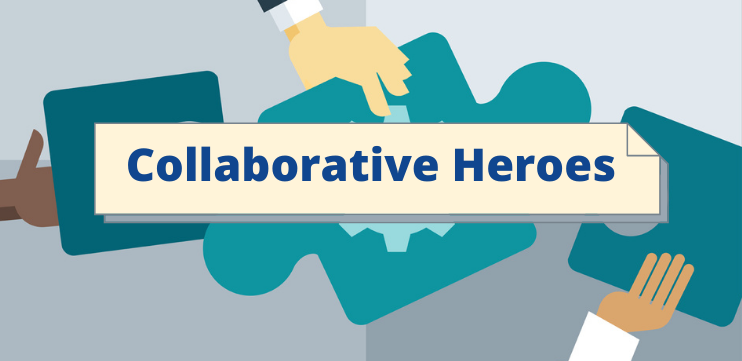Collaborative Heroes
by dias

Battling philosophies on the best way to reform K-12 education, especially large, urban systems, in the U.S. seem to have made one thing very clear: schools, alone, can’t catch all of America’s kids up to where they should be. Enlightened school system management, strong principals, well-trained and motivated teachers and engaging curricula are essential, of course. But children need to arrive at school conditioned to learn. They need to be encouraged to stretch and succeed. They need to be well nourished and well rested. They need to feel safe and secure.

So, with the tremendous daily challenges school districts face, how can they meet that scale and kind of needs? Partnerships became the easy answer. Let non-profits, community organizations, even businesses help fill the gap. On a case-by-case basis, many partnerships had meaningful, positive impact. But school districts also began to find themselves drowning in partnerships – all well meaning—but most doing their own thing their own way and with little coherence between programs, schools and, most important, in their interactions with students.
That’s where we’ve seen the collective impact process have real effect, particularly the “backbone” organization aspect. In our work with the Boston Opportunity Agenda, stemming summer learning loss emerged as a priority to help achieve the Opportunity Agenda’s goal for significant increase in the number of Boston Public School (BPS) students on track for high school graduation. The idea was to reshape summer learning – to fuse enrichment with academics, to build personal strengths along with educational advancement, and to expand students’ horizons.
But how to do that? The first answer was to pull together recreational and cultural providers and team them up with BPS principals, administrators and teachers and design a new system of summer learning. The planning process yielded shared goals, consensus on how to achieve them and agreement on an unprecedented level of information sharing on students and information exchange and training between BPS and the consortium of summer partners.
The second answer was to find a trusted and capable backbone organization to keep the planning moving forward (the timeframe was ambitious: nine months) and to manage implementation. A non-profit, Boston After School & Beyond (Boston Beyond, http://www.bostonbeyond.org/), was the hands-down choice. Boston Beyond began as an entity charged with mapping all the out of school enrichment programs for Boston children and youth and building a website that parents, or kids, could access to make plans for afterschool and summer. In this context, it was clear that Boston Beyond had the contacts, the funding to support its initial involvement, the credibility, a savvy staff and, most important, the vision to bring this new system of summer learning to life.
With support from the Boston Opportunity Agenda and existing national philanthropic supporters, Boston Beyond took on the job of enlisting partners and expanding the number of schools and children served, monitoring quality and reporting results, developing additional financial resources and acting as the bridge between the school system and its new team of partners – all roles that would have sunk most of the other entities involved.
The Boston Summer Learning Project has expanded from 232 students in the 2010 inaugural year to 1,700 in ’13 and the number of participating schools has gone from five to 51. Principals, teachers and parents of the students involved are seeing academic and personal growth, as are the children themselves. Boston Beyond has become a national leader in school and out of school collaboration and a fount of best practice information and research. It is also a shining example of what a backbone organization is.
Our hope is that the value of these kinds of collaborative heroes will become better appreciated. Too often, our society still operates off an old model focused on funding individual programs rather than believing and investing in collaboration. In fact, a funder we know recently declined to even consider supporting a backbone organization in her community, saying, “We only fund things that serve people directly.” Meanwhile the initiative in question was engaging dozens of organizations and civic leaders in ways that would have profoundly leveraged the foundation’s investment.
It’s time to recognize that a big challenge, like improving K-12 education, isn’t a single institutional responsibility. It’s a community responsibility. And supporting backbone organizations is one of the best ways to translate responsibility into action.
According to the study of the resource betraja.in So, with the tremendous daily challenges school districts face, how can they meet that scale and kind of needs?
